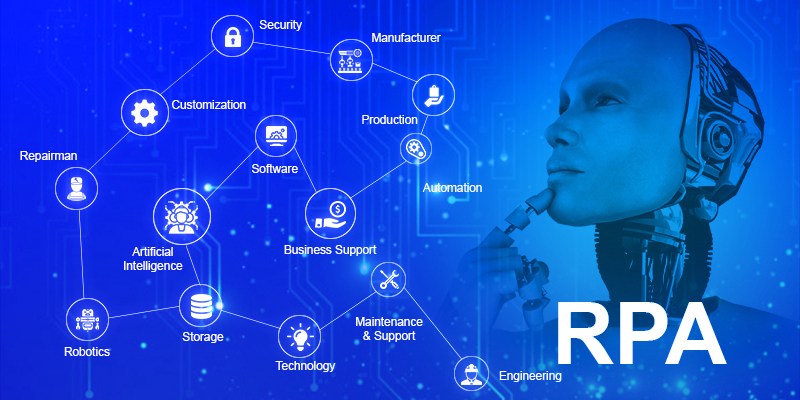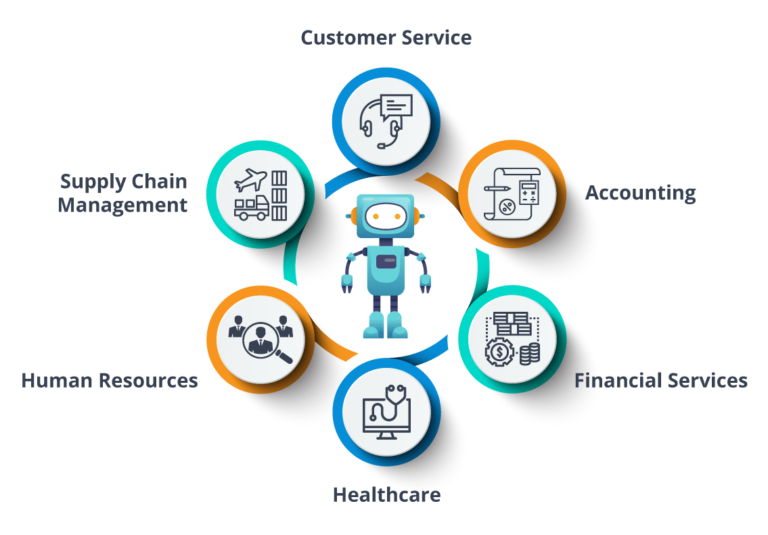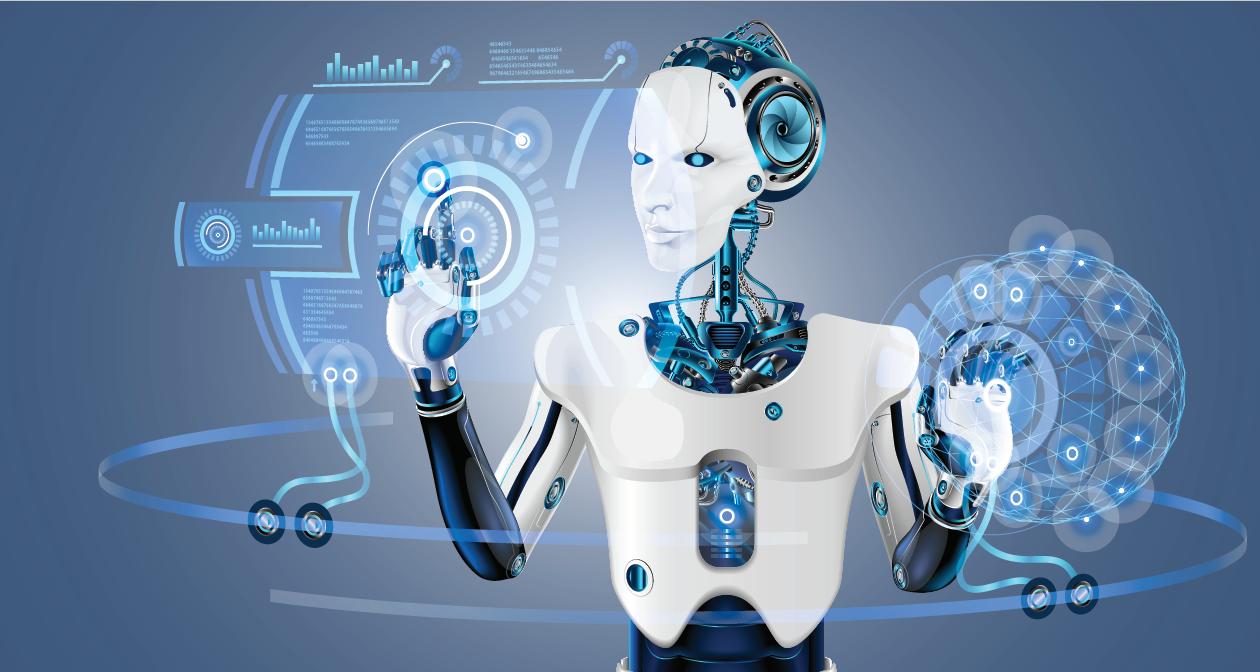Automation is a major buzzword in today’s era, and it is everywhere. From BFSI to healthcare to retail, every industry uses automation to reduce costs and increase profitability. The latest chapter in the book of automation of robotics process automation (RPA).
So, here’s all you need to know about RPA, along with its uses, benefits, and future.
What Is Robotics Process Automation?
Robotic process automation or RPA is a software technology that enables you to develop software robots, also known as bots, to mimic human actions. These bots are a type of software tool that can learn, memorize, and execute actions based on certain rules. The developer can implement any rule, and the bot can learn and mimic it. As a result, these bots can interact with applications, systems, and even other people.
A classic example of RPA is chatbots. Many websites nowadays have a live chat feature on their website. However, a customer support representative can’t sit in front of the screen 24/7 waiting for someone to send a message.
Hence, many companies use chatbots to replace tier 1 customer support. These bots can interact with users, gather the basic information, understand their issues, and provide them with the basic resolution. If the bot can’t help, it can accelerate the problem to the next tier of customer support.
How Does Robotics Process Automation Work?
In all, RPA works by collecting the information of your existing IT systems and assessing them. Based on the rules you set, it emulates the actions you assign it to do. You can integrate RPA with your systems and applications in two ways. Firstly, you can connect it to the backend: enterprise web services and databases. Secondly, you can connect it to the frontend: desktop connections.
The ultimate purpose of RPA is task automation. Automation is not a new concept, and businesses have used it for years. There are three types of automation:
- Manual Automation: Customer-focused, judgment-based, and unstructured
- Attended Automation: Repetitive, manually-triggered, and semi-structured
- Robotic Automation: Rules-driven, repetitive, event/schedule-driven, and structured
Benefits of Robotics Process Automation
The robotics process automation market is projected to reach $2.46 billion by 2022 at a CAGR of 30.14%. But why is RPA such a big deal? What’s the reason for its exponential growth?

Firstly, let’s look at some major benefits of RPA driving its growth.
- Faster Transformation: RPA is the cornerstone of accelerated digital transformation.
- Enhanced Resilience: Process automation enables organizations to meet production and service requirements and become resilient to demand fluctuations.
- Increased Accuracy: RPA goes a long way in reducing manual errors that could add substantially to business expenses.
- Improved Cost Savings: It improves business metrics in multiple ways, enhances operational efficiency, and helps cut down costs.
- Enhanced Productivity: RPA helps organizations reduce manual and redundant tasks, thereby making the workforce more productive.
- Better Compliance: Robotics process automation helps companies become more compliant and stay away from penalties and other legal hassles.
- Increased Personnel Value: RPA plays a vital role in bringing more value out of employees.
- Satisfied Employees: Process automation makes employees’ lives easier and helps them focus on more important tasks. This improves employee satisfaction.
Applications of Robotics Process Automation in Major Industries
However, the applications of RPA go beyond chatbots. The technology has developed significantly and found its uses in almost every industry. Let’s look at the use cases of robotics process automation in the major industries.

Banking and Financial Services
Banking & Finance was one of the earliest industries to adopt RPA. Almost every major bank and financial services provider uses RPA to automate processes like customer inquiry processing, anti-money laundering, identity verification (KYC), and more. All these operations are critical but also time-consuming. RPA is a perfect technology to perform these tasks accurately and efficiently.
Healthcare
Many people see healthcare as an outdated and old-school industry with a lack of innovation and technology. That is certainly not the case. In fact, the healthcare sector has been one of the leading adopters of new technology. Many hospitals use robotics process automation to streamline and automate patient records management, prescription management, payment cycles, insurance claim processing, and more.
Insurance
Apart from Banking & Finance, the insurance industry also uses RPA for several regulatory and verification purposes. These include policy management, claims processing, regulations management, and the like.
Retail
RPA is new to the retail sector, but it’s slowly making its way to be one of the favorite technologies of the industry. Retail businesses use RPA to improve employee and customer experiences. Also, there are other applications of the technology in the retail sector. These include customer relationship management, feedback collection and processing, order management, warehouse management, and fraud detection.
Marketing
These days, many marketing teams have started using RPA to automate marketing processes. This mainly includes customer interactions that were earlier carried out by sales reps or marketing agents. For example, sales reps would send cold emails to all customers, which took much time. RPA enables marketing teams to automate email and chat interactions, and thus, it saves time and effort.
Customer Support
Lastly, RPA helps customer support teams provide tier 1 support without the involvement of a human agent. Therefore, customer support teams can save a significant amount of time, allowing reps to focus on important human interactions.
Future of Robotics Process Automation
Overall, RPA is the technology of the future. To date, we know very little about it, and several trends are emerging every other day. Let’s look at two major future trends that will reshape the RPA industry.
- Again, robotic process automation will grow exponentially in the upcoming years. This also means more businesses will realize its benefits and adopt it on a massive scale.
- Intelligence will go a long way in transforming automation. The use of RPA will go beyond automating routine tasks to perform more complex and sophisticated work.
Conclusion
To conclude, Automation is reshaping the world, and it will continue to do so. Robotics process automation is the latest addition to the realm of automation, and it will grow exponentially in the upcoming years. Its applications are massive, and almost every industry uses RPA in some way or the other.
So, what’s your take on robotic process automation?

